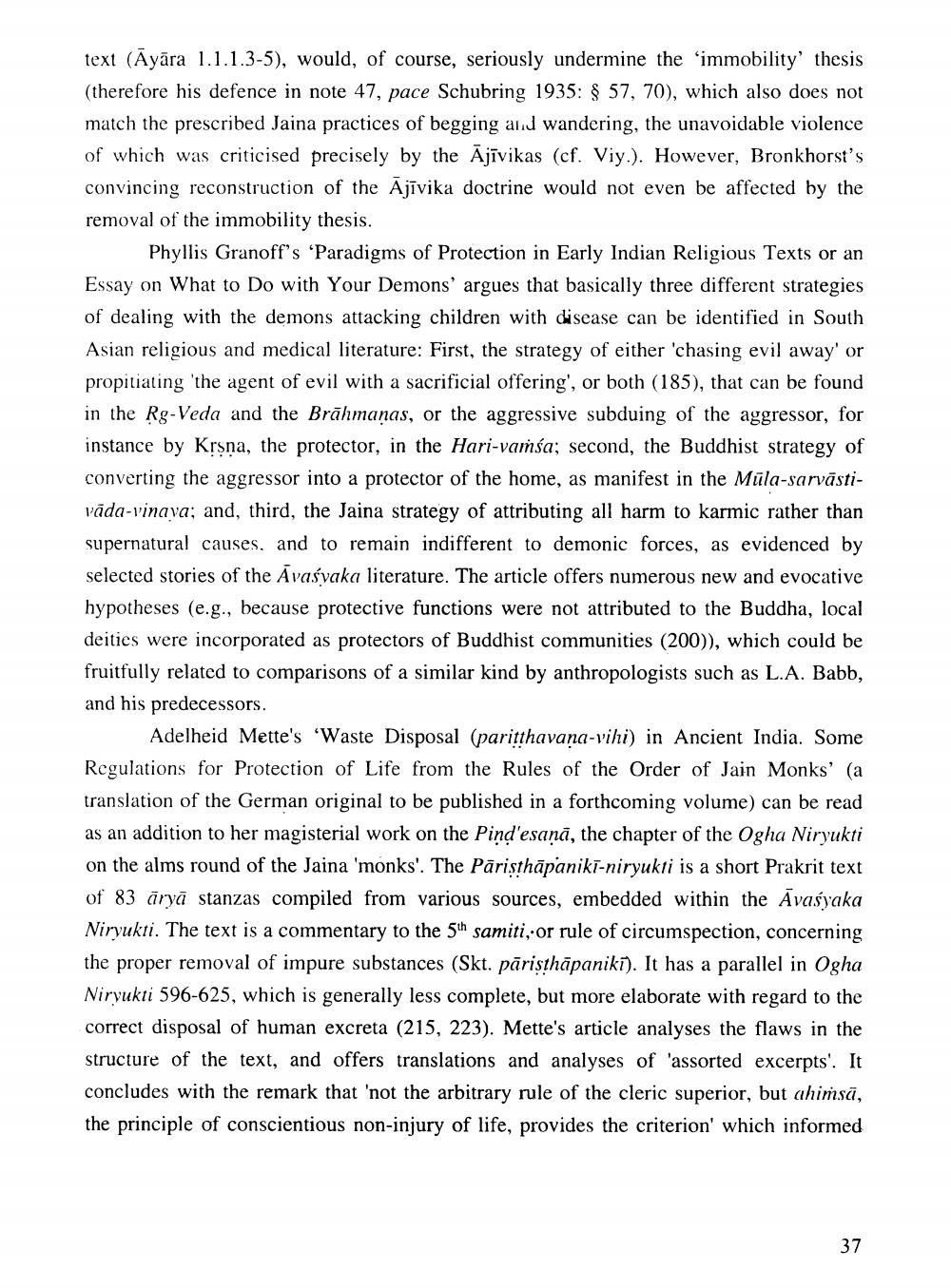________________
text (Ayāra 1.1.1.3-5), would, of course, seriously undermine the 'immobility' thesis (therefore his defence in note 47, pace Schubring 1935: $ 57, 70), which also does not match the prescribed Jaina practices of begging and wandering, the unavoidable violence of which was criticised precisely by the Ajīvikas (cf. Viy.). However, Bronkhorst's convincing reconstruction of the Ajīvika doctrine would not even be affected by the removal of the immobility thesis.
Phyllis Granoff's 'Paradigms of Protection in Early Indian Religious Texts or an Essay on What to Do with Your Demons' argues that basically three different strategies of dealing with the demons attacking children with disease can be identified in South Asian religious and medical literature: First, the strategy of either 'chasing evil away' or propitiating 'the agent of evil with a sacrificial offering', or both (185), that can be found in the Rg-Veda and the Brāhmanas, or the aggressive subduing of the aggressor, for instance by Krsna, the protector, in the Hari-varsa; second, the Buddhist strategy of converting the aggressor into a protector of the home, as manifest in the Müla-sarvāstivāda-vinava; and, third, the Jaina strategy of attributing all harm to karmic rather than supernatural causes, and to remain indifferent to demonic forces, as evidenced by selected stories of the Avasvaka literature. The article offers numerous new and evocative hypotheses (e.g., because protective functions were not attributed to the Buddha, local deities were incorporated as protectors of Buddhist communities (200)), which could be fruitfully related to comparisons of a similar kind by anthropologists such as L.A. Babb, and his predecessors.
Adelheid Mette's 'Waste Disposal (paritthavana-vihi) in Ancient India. Some Regulations for Protection of Life from the Rules of the Order of Jain Monks' (a translation of the German original to be published in a forthcoming volume) can be read as an addition to her magisterial work on the Pind'esaņā, the chapter of the Ogha Niryukti on the alms round of the Jaina 'monks'. The Pāristhāpaniki-niryukti is a short Prakrit text of 83 āryā stanzas compiled from various sources, embedded within the Avasyaka Niryukti. The text is a commentary to the 5th samiti, or rule of circumspection, concerning the proper removal of impure substances (Skt. pāristhāpanikī). It has a parallel in Ogha Niryukti 596-625, which is generally less complete, but more elaborate with regard to the correct disposal of human excreta (215, 223). Mette's article analyses the flaws in the structure of the text, and offers translations and analyses of 'assorted excerpts'. It concludes with the remark that 'not the arbitrary rule of the cleric superior, but ahimsā, the principle of conscientious non-injury of life, provides the criterion' which informed
37




